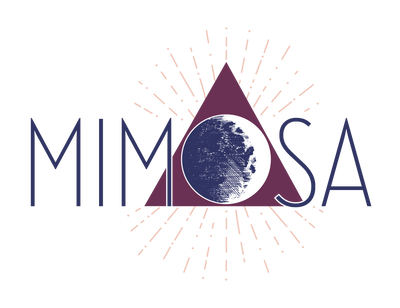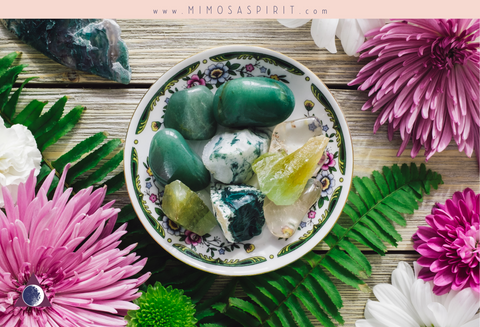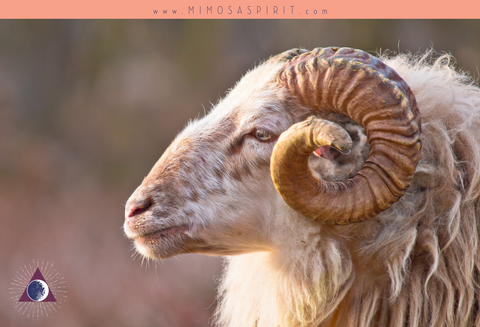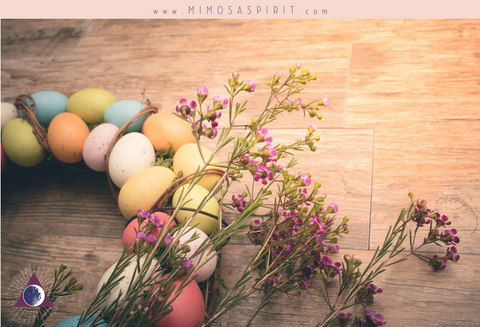
An Introduction to the Many Varieties of Incense
(And How to Use Them)
Incense is essentially any herbs and other aromatics processed for burning. Incense has been used since before recorded history, for ritual, health, purification, religious offering, and to influence mental states.
Most incense contains aromatic materials, a binder (often acacia gum) and a little charcoal to help it burn evenly. Purer forms use plant-based mucilage to bind the scent agents, with naturally occurring cellulose taking the place of charcoal in the mixture.
Incense smells good, and there's nothing wrong with enjoying it for that reason alone. But as with crystals, incense -- in all its different styles and fragrances -- has metaphysical properties based on a long history of use. Each incense has traditional associations, often including the magical or medicinal properties of the plants used to make it. In fact, if you're used to working with crystals, the nature of many incenses can to some extent be compared to the properties of specific stones: sandalwood to quartz, lavender to amethyst, rose to rose quartz, etc. Using a crystal with a complementary incense amplifies the power of both.
Most modern incenses are built around a sandalwood stick or cone, overlaid with perfumes, essential oils, resins or other sources of fragrance.
Traditional Incense Sticks (Often from India):
Much of the technology and tradition of incense was developed in India, over the course of many centuries. Plant materials (including resins, tree bark, flowers, roots, leaves, or seeds) are mixed into a matrix of binder and powdered charcoal or wood, making a paste. Artisans roll a bamboo stick into this paste for stick incense, or form it into some sort of shape, often a cone. Sometimes it’s finished with a dip in scented oil (although this is typically only done with lower quality incense that doesn't get much of its fragrance from the materials used to make it).
Tibetan Incense Sticks:
Incense is part of traditional healing in Tibet, so Tibetan incense sticks tend to have a distinct herbal scent. Most of these are thicker sticks than traditional incense and have no wooden stick in the middle. Higher quality brands may use a sandalwood stick in place of bamboo.
Tibetan Rope Incense:
In this form of incense, powder is rolled into paper, and then the whole thing is twisted up to make a flexible rope, about four inches long. Comes in limited scents, but this form of incense stays fresh a long time, and is easy to take along during travel. You can set it in sand or hang it to burn. Traditionally, it was hung in temples to fill them with a heavenly scent.
Herbal Cleansing Bundles:
An herbal cleansing wand is a cluster of dried leaves, usually tied with string. Juniper, cedar, rosemary, lavender, and pine are all commonly used for herbal cleansing. To cleanse and purify a space, light the wand so that the end leaves are smoldering, then move around the room with it, letting the smoke waft near doors, windows, and any other feature that needs special attention. When you’re done, either leave the wand in a container (supervised of course!) or snuff it out in sand or water to be used again later.
Check out our Space Clearing Collection to see herbal cleansing bundles currently in stock!
Resin Granules:
This is likely the oldest form of incense. If you burn a pine log and see the sap squeezing out in the heat, you’re seeing “wild” resin incense. Resin incense will not burn on its own, but needs a source of heat. In a modern home, that source is usually a charcoal disc or brick. Light your charcoal disc (many are self-lighting and need only a small flame to get them started), and let burn until the charcoal is smoldering. Then transfer the charcoal disc to your incense burner with tongs, and drop a few grains of resin or a little scoop of powder right on top and enjoy.
If you use resin incense, you should be aware that bamboo charcoal is purer than the discs, which have additives in them to help them start and continue burning (often saltpeter and sulfur). Resin incense, while very pure, is quite strong. It’s best to start with just a couple grains, adding more as you need it.
Joss Sticks:
Small incense sticks traditionally placed in doorways or on altars, as a blessing or offering. The word “joss” comes from Deus, meaning “God,” a word the Chinese adopted from Portuguese missionaries.
Dhoop (Sticks or Cones):
Another variety of short, concentrated stick incense, which usually comes in a special box (many of these boxes double as a holder). Dhoop is a flexible term, and sometimes also refers to Indian cone incense as well.
Koh (Japanese Incense Sticks):
Very pure Japanese incense with a fresh, light scent. It has no wooden stick, though it’s formed into a stick-like shape. Sometimes koh is a bit thick to fit in a standard incense burner, but many brands come with their own little holder (often a very small ceramic tile with a hole), which you can set on a plate or dish to catch the ash. Packages are often deceptively small; a tiny package often holds as many as fifty sticks.
Botanical Incense:
Incense made by infusing some kind of a standard incense, often sandalwood, with essential oils. It’s sweet, but in a fresh way, not cloying. Some blends have magical names like “Moon,” while single-ingredient sticks feature plants, sometimes uncommon ones. Botanical incense is often chosen for its magical properties.
Common Incense Blends:
Nag Champa:
While there is a flowering plant called nag champa, the incense that goes by that name is actually a blend of sandalwood with floral scents that include the champa flower, ylang ylang, and others. Traditional nag champa formulations also rely on resin from the halmaddi tree (Ailanthus, or tree of heaven). It creates a soothing, relaxing mood.
Nag Champa Incense Uses: purification, creating sacred space, spiritual matters, meditation, enlightenment.
Aastha:
Very much like Nag Champa, but a little sweeter. The name means "faith."
Aastha Incense Uses: relaxation, meditation, religious occasions.
Aqua:
A light floral scent with cyclamen and primrose.
Aqua Incense Uses: any kind of cooling, whether of temper, physical fever, or excess emotion of any kind.
Darshan:
This traditional blend combines sandalwood, jasmine and vanilla. The word Darshan can mean "pilgrimage," or may imply having a vision of a deity or holy person.
Darshan Incense Uses: concentration, freedom from negativity, reviving a tired mind or spirit.
India Temple:
Since India Temple is a brand name, the ingredients are proprietary information. The manufacturer will only say that they use "the finest fragrant woods, herbs, essential oils, and other ingredients of the highest quality," and that it is designed to smell "just like temples in India."
India Temple Incense Uses: connecting with Hindu traditions, ritual.
Opium:
This incense does not contain any parts of the opium poppy. It's a blend formulated to resemble Yves St. Laurent's Opium perfume, which is a blend of many typical incense ingredients, including sandalwood, cedarwood, jasmine, rose, cinnamon, and many more. Unsurprisingly, it turns out smelling somewhat like a store that sells incense.
Opium Incense Uses: sleep, lucid dreaming, developing psychic skills, contacting deities and guides in dreams.
Plum Blossom:
This Japanese incense is actually a combination of floral and spicy ingredients, blended to evoke spring. As far as we've been able to discover, it doesn't actually use plum.
Plum Blossom Incense Uses: meditation, connecting with Zen Buddhist or other Japanese traditions, purity, feeling young.
Individual Incense Scents:
The following are properties for single incense ingredients. Remember, though, that most stick and cone incense contains more than one ingredient (usually including a sandalwood base).
- Amber: love, comfort, happiness, healing, past life discovery, connecting with the past.
- Benzoin: purification, clearing negative energy, balance, prosperity, dealing with negative emotions (especially anger, anxiety and depression), working through grief.
- Cedar: purification, clarity, enhancing psychic skills, love, preventing nightmares, respiratory infections .
- Cedarwood: purification, protection, abundance, grounding, clarity, male virility, strength (including strength during a healing process).
- Cinnamon: prosperity, success, healing (especially during winter), love and romance, amplifying the energy of spells or rituals, strength, cultivating power (especially for people who feel otherwise powerless, or as if they are in a hopeless situation).
- Copal: Purification, protection, exorcism, finding true love, separating from toxic relationships.
- Cypress (including Hinoki): Strength, comfort, stress relief, confidence, will power, concentration.
- Dragon's Blood (resin from dracena plant): removing negativity, banishing unclean entities, protection (especially during magical work), enhancing power, male energies.
- Frankincense: Purification, consecration, meditation, resolving conflicts, speaking up for oneself or others, transforming a chaotic environment to one of peace. Often used in religious rituals, sometimes with myrrh.
- Gardenia: Love, healing or maintaining good health, peace.
- Geranium / Rose Geranium: courage, protection.
- Ginger: love & romance.
- Jasmine: attracting love or money, cultivating beauty (especially inner beauty), creativity (especially creating something that will touch other people), connecting with others emotionally, wisdom, dreaming (including prophetic dreaming).
- Juniper: psychic skills, psychic protection & protection from the evil eye, breaking a string of bad luck.
- Lavender: relaxation & sleep, protection & purification, romance, cleansing (especially after a period of health issues), healing (especially from addictions), serenity.
- Lemon: healing, purification, love. An especially good scent to use during fasting.
- Lemongrass: mental clarity, relief of respiratory conditions.
- Lotus: peace & harmony, improving mood, concentration, focus. Very good for meditation, or to burn while studying.
- Mesquite: disinfecting, digestive problems, enhancing the energy of spells or rituals.
- Musk: love & romance, courage, facing one's limits (especially one's mortality), connecting with departed loved ones.
- Myrrh: purification, consecration, exorcism, banishing negative influences, connecting with solar deities & powers. Traditionally burned during funerals.
- Patchouli: attracting love ** & money, connecting with fae, sensuality, fertility, finding happiness.
- Pine: purification, banishing negative energy, removing curses, moving beyond outgrown habits and circumstances, strength & healing, finding a job.
- Rose: love & romance, fertility, emotional healing, enhancing beauty (including inner beauty), divination, house blessing.
- Sage: protection, purification, wisdom, balancing mind/body/soul, cleansing, creating & purifying sacred space.
- Sandalwood: Protection, purification, sanctification, offering to any god, good luck.
- Vanilla: love & romance, decision making, study, power.
- Ylang Ylang: Love, harmony, peace, euphoria.
Practices for Safe Incense Burning:
Incense burning is a healthy practice, as long as you use common sense.
Practice #1: Ventiliate:
We love the smell of incense, but we’re also aware that air quality is very important and shouldn’t be taken for granted. Ventilate as best you can. Open a window in summer, or an inside door or chimney vent in winter. If you're sensitive to incense or smoke, an oil burner or reed diffuser might be a better choice, but botanicals and Japanese koh incense burn clean enough to work for all but the most sensitive people. People with allergies or asthma should be especially careful, as should pregnant women. Actual allergy to incense is rare, but sensitivity to smoke or fragrances isn’t.
Practice #2: Buy Good Quality (Non-Toxic) Incense:
Buy good quality incense. While there is no such thing as a “hypoallergenic” incense, the purer the incense is, the less it’s likely to cause you trouble. The wooden stick inside of many incense types creates smoke without enhancing the smell of the incense. Many Japanese incense varieties are made without sticks or perfumes, and they’re not much more expensive than other brands. A few other brands do have sticks, but are scented only with pure essential oils with very few additives.
Practice #3: Use Only What You Need:
Use only the right amount of incense for your space. Burn just enough to make the room fragrant, not smoky, and leave a window open at least a crack when the weather allows. A joss stick or half a stick of Japanese incense is plenty for a single room. A whole stick or cone is enough for a couple of rooms, or a room with the windows wide open. The extra-large, foot-long sticks (often called Garden Sticks) are meant to be used outside.
Practice #4: Never Leave Your Incense Unattended:
Obviously, you’re dealing with fire here, so be careful about leaving incense unattended, especially if there are pets or small children about. Unburnt incense smells good too. Many people come into Mimosa and ask what smells so good; it’s all the unburnt incense on the shelves. Leaving an open pack of incense in a closet or drawer will make it smell nice. There are plenty of alternatives to incense, such as scented candles, oil burners, reed diffusers, room spray, aromatherapy diffusers, and nebulizing diffusers. Diffusers and room sprays don’t require fire of any kind, so you can even use them if your lease prohibits open flames.








0 comments